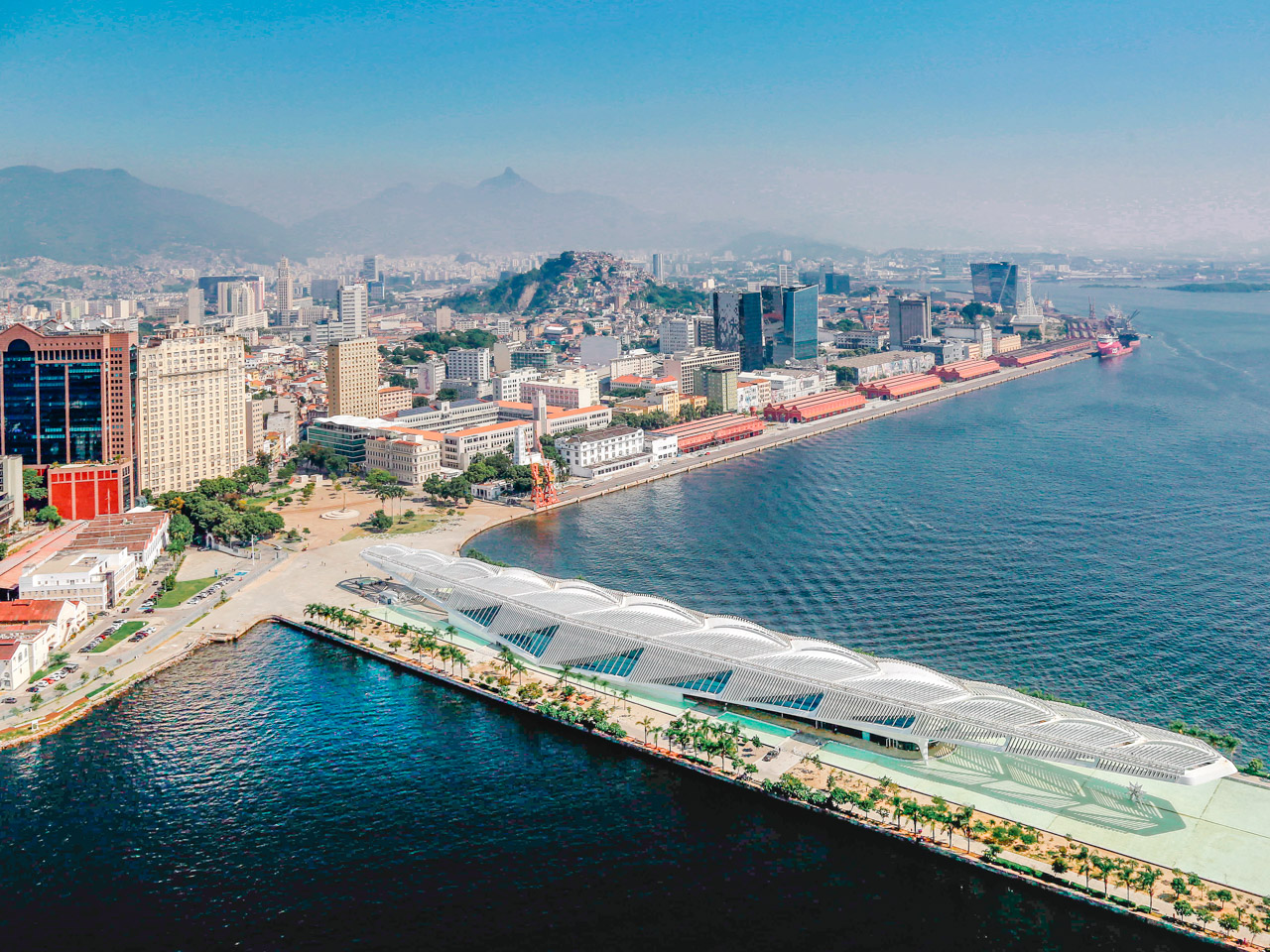2024 Special Mention — Rio de Janeiro
Rio de Janeiro is recognised for taking bold moves to redefine its central area and waterfront, moving away from decades of a mono-functional downtown and suburban sprawl – a legacy from its historical development since the 1980s.1
 The rejuvenated waterfront of Rio de Janeiro with the Museum of Tomorrow in the foreground © City of Rio de Janeiro
The rejuvenated waterfront of Rio de Janeiro with the Museum of Tomorrow in the foreground © City of Rio de Janeiro
RIO DE JANEIRO is recognised for taking bold moves to redefine its central area and waterfront, moving away from decades of a mono-functional downtown and suburban sprawl – a legacy from its historical development since the 1980s. Through strategic implementation of innovative land transfer policies, financing mechanisms and an evidence-based programming approach, the city is poised to shift public mindsets and set in a motion a transformation towards a more attractive, liveable, and vibrant downtown.
Redefining urban development paradigms
Rio demonstrated political will in shifting its urban development paradigm, as exemplified by the 2013 removal of the coastal Perimetral Elevated Highway – a pivotal moment in its urban evolution, leading to a 3.4-kilometre pedestrianised boulevard along the waterfront. Lined with cultural institutions and event venues, this new urban corridor continues to draw visitors back to the city centre. At the same time, eight kilometres of surface roads rerouted into a tunnel 46 metres below sea level increased traffic capacity by 50 percent. Today, the waterfront area thrives as a lively district, featuring urban plazas, pedestrian zones, sustainable transportation, and cultural landmarks like the MAR Museum of Art and Museum of Tomorrow.
Adopting a multi-prong approach to revitalise the centre
Rio is commendable for its focused approach to rejuvenate its dormant downtown following the pandemic. Formulated from a comprehensive benchmarking exercise, Reviver Centro is an initiative that positions the city’s existing cultural assets as catalysts for transformation. To revive its economy, the Porto Maravalley project leverages technology and innovation to attract and develop tech talents and startups in a former warehouse district. Furthermore, Rio has successfully staged several global events such as 2014 FIFA World Cup and 2016 Summer Olympics to draw visitors to the city.
Meanwhile, the city gains momentum in converting disused sites into cultural uses and facilitated the licensing of 2,300 new residential units through subsidies and strategic land transfers for private building owners. Within its downtown Low Emission District, the promotion of active mobility and greenways, as opposed to cars, addresses emissions-related concerns while fostering a safer urban environment. Furthermore, Rio’s dedication to honour its African heritage, notably through the restoration of the UNESCO World Heritage Site Valongo Wharf, emphasises its commitment to inclusivity.
Financing and sustaining urban development innovatively
Rio’s innovation in financing and sustaining urban development is manifested in the sustained development of Porto Maravilha, overseen by public company CCPAR. Leveraging a new law that enables developers and landowners to acquire bonus floor area in the district, the city sold these development rights to a federal bank. which take on the role to negotiate and assign the bonus floor areas to the appropriate sites. This initiative helped the city raise funding for critical infrastructure and other public investment for the district, and also channel physical development to realise the planned transformation of Porto Maravilha.
While Rio’s current plans show promise in bringing more people back to its downtown area, many of its initiatives are at the initial phase of implementation. Continued efforts and leadership support can help to ensure that the city’s urban transformation is enduring and sustainable. O
Commemorative video
Case studies
| 01 | Reviver Centro Revitalising Rio’s central district by converting underused commercial buildings into residential use, to bring people back. |
| 02 | Low Emissions District A pilot project that aims to reduce greenhouse gas emissions and promote sustainable urban spaces through clean transport, active mobility, and green infrastructure. |
-
All information correct as of 2023. ↩

